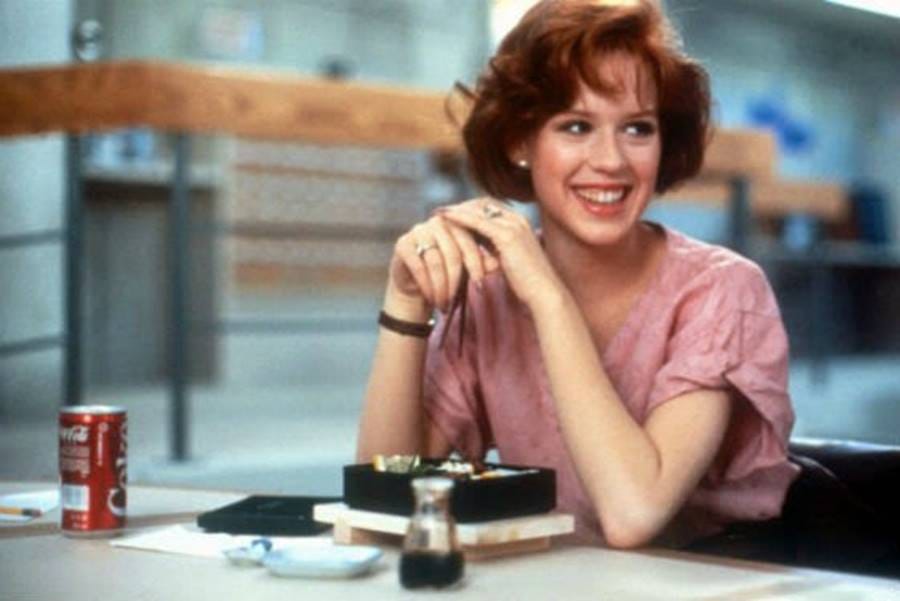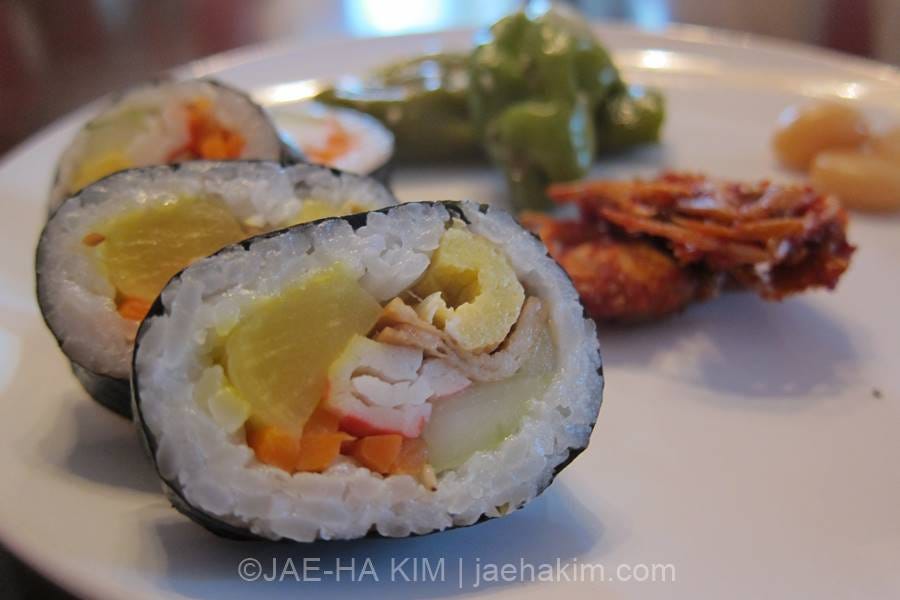When Strangers Destroyed Our Korean Lunch
To them it may have been smelly and weird. To us, it was a taste of home.
I still remember this scene from “The Breakfast Club.” As all the kids in detention pull out their bagged lunches, rich girl Claire (played by Molly Ringwald) carefully lays out her bento box, which is filled with sushi.
The other teens stare at her and give her a bit of a hard time. But, because she’s one of the popular kids, it doesn’t go much beyond that.
This film was released in 1985. And, yes, I am old enough to have seen this in the movie theatre.
While sushi is commonplace these days, it’s still not the type of meal most parents pack for their kids — not in the United States, anyhow.
When my son was very young, he was eating some Chinese bao for dinner. The meat-filled bun had just been steamed and was soft and fragrant. He enjoyed his bao so much that he asked if he could take one to lunch at school.
I hesitated.
On the one hand, there was the logistics of keeping the bao warm enough to still be tasty at lunch. But, I was also worried what the other children might say. My mother had sent us to school with sandwiches, just like our classmates. Not because we requested them, but because she wanted us to fit in. And all these decades later, I wanted the same for my child. I didn’t want him to have to deal with teasing from classmates.
Little kids are wonderful, but they can also be brutal to each other.
A few years after this when the weather was nice out, my family was having a little picnic dinner of rice (밥), Korean ribs (갈비) and crisped & roasted seaweed (김). I didn’t bring kimchi (김치) on purpose, because I didn’t want the aroma to attract unwanted attention. Still, a little girl passing by wrinkled up her nose and said, “What is that?!”
She was just a little girl without a filter. So I explained to her what it was and she said, “That’s weird.”
I was about to tell her what was in her hot dog, but decided against it. Instead, I explained, “It’s not weird. It’s just different.”
She repeated her opinion to herself and went about her business.
Many decades ago when I was maybe 6 or 7 years old, my mother and uncle took us kids to Adventureland. At the time, it was the largest amusement park in Illinois. It was quite a treat for us to get to spend the day there. While my uncle took us on the rides, my mother guarded our picnic basket, which she had carefully packed with kimbap — which is standard Korean picnic fare — banchan and bottles of Coca-Cola.
We finally convinced my mother to come on some rides with us. This was America, we told her. Our food would be safe if we just left it at the picnic table. Unconvinced, my mother asked a family if they would watch our basket until we returned in about 15-20 minutes.
“Sure!” they promised. “No problem! Have fun.”
I’m not sure how long they waited before they started picking through our food. But when we returned, there was nothing salvageable to eat. They drank all our sodas and took bites of our food. That they didn’t like our picnic lunch or respect food in general was obvious, because they smashed up everything they hadn’t already tried to show their distaste.
This wasn’t a group of kids. This was a family, with adult parents and children who they likely encouraged to participate in this food carnage.
My mother was shocked. She couldn’t believe that Americans would do such a thing. She was sad not because they didn’t like her food — she didn’t expect Americans to like it — but because they made the choice to waste an obscene amount of food that she had spent a lot of time and money on.
When my mother was a young bride, beggars used to show up at our house in Seoul. She would give them what she could spare, but often it wasn’t much. One day, she gave some old rice to a hungry woman, who gratefully ate it, though the rice was probably spoiled. My sister — who was very young at the time — watched her. The woman, thinking that my sister might be hungry, offered to share the rice my mother had given her.
This starving woman had more decency than these horrible people who clearly had never gone hungry a day in their lives.
I wonder if my mother thought of this as she packed the same school lunches for us that all the other moms of that era made — white bread slathered with butter or Miracle Whip and a few slices of deli meat. I wonder if she missed preparing the rice, vegetables and fish she would make for my siblings when they went to school in Korea.
I would’ve preferred to eat Korean lunches. But as an adult, I understood why my mother never packed kimbap for us to take to school in the U.S.
When I was little, westerners would make comments right in front of me, as if I wouldn’t understand, about all the weird things I must eat. They asked if we didn’t have pets because we ate them. Ha ha.
I remember the comedian Redd Foxx making disparaging remarks about how one of his ex wives — who was Korean American — ate bugs. (It was actually 멸치볶음 — pan-fried anchovies, one of my absolute favorite treats.)
These are the same people who enjoy eating a scoop of beige casserole made from a can of cream of mushroom soup and potato chips. I say this not to make fun of that dish — although it’s one that I don’t personally like — but because what’s odd to one person is something that makes another’s mouth water.
In one of my first jobs as a reporter, I was friendly with a colleague who was part Korean. Sometimes we would sit at her desk and eat some of the treats her mom packed for her. Don’t you know that someone — and before you ask, yes, she was — called security, saying that we were disturbing the newsroom with smelly food. (Mind you — this was in an office where carryout lunches and dinners included Thai, Chinese, Mexican, Japanese and Middle Eastern meals, in addition to the standard soup and salad fare.)
To his credit, the security guard all but rolled his eyes when he heard her complaint. And he gladly accepted some of the Korean snacks we were enjoying.
All these thoughts ran through my head as I looked at my son, who was about six at the time. I was about to pack the bao he asked for his lunch, but then he asked if he could have mac and cheese instead.
Of course. And it doesn’t make me happy to say that I was relieved with his request. But I was. Because some of the microaggressions that we carry from our childhood are things that are difficult to process even as adults.
What I’ve had published this week:
• I profiled Oscar-nominated musician Ian Chang of Son Lux for the Chicago Tribune:
The trio received a scoring nomination – the first band since the Beatles – at this year’s Academy Awards for their work on the Oscar-winning film “Everything Everywhere All At Once.” “The Daniels [Daniel Kwan, Daniel Scheinert] – who wrote and directed the movie – reached out to Son Lux very early on in the process in 2019,” group member Ian Chang said. “At the time, the movie was just a script and it hadn’t been shot or even cast yet. We actually recently found out that we may have been the movie’s first hire! We fell in love with the script and the vision that Daniels had for it and started to dream and put together musical themes and ideas off-picture.”
• And yesterday, my review of SUGA’s solo tour ran in Teen Vogue:
In the final moments of the show, the cameras seem to multiply, his cadence intensifies, the lights flash like paparazzi light bulbs. On the giant screen, surveillance-style footage captures him at a dozen different angles. It’s all fury and flame and breathless swagger; Suga can dance, Agust D prefers to stalk. And the last image we see is Min Yoongi, his retreating back, the house lights already up, a person at the very end of it all.
What I’m currently watching:
• Doctor Cha: I am loving this show, which is about a stay-at-home mom in her late 40s who puts her medical degree to work … by returning to work. I am enjoying this thrust of K-dramas where the lead actors are women in their 40s and older. There’s an adoption element in it, which I’m side-eying until I see how it plays out.
• Somebody: It’s a thriller that definitely deserves its MA rating. It’s not one of my favorites, and I am really not into it. But we’ll see how the last couple episodes go.
K-drama I recommend:
• Queenmaker: I whipped through that series much too quickly and was so sad when it ended. However, the finale hints that there will be an upcoming second season.
Food-related K-drama:
• Let’s Eat (식샤를 합시다): First things first. This is not a good K-drama. And it got to the point where my family was asking why I continued to watch it. Why? Because each episode focused on so much delicious looking food. OMG. Stews, seafood, banchan… I could almost taste everything. While the cast isn’t given much to do, when they are directed to eat, they make everything look so delicious, especially lead actress Lee Soo-Kyung (playing a character of the same name). She eats with such gusto that it almost hurt to watch, because I wanted to eat whatever she was having, too.
© 2023 JAE-HA KIM | All Rights Reserved






Wow, how disgusting can people be?!
To offer a bit of a different note on this...I'm a German living in Germany and loving Korean food. I make it often myself (including Kimchi which has been approved by a Korean ;o), and husband (also German) and I are regulars at a Korean restaurant near us. What strikes me the most, though, is that there is often a familiar taste in that so-called "foreign" food. Take for instance Jokbal, that could be described as a German Schweinebraten (pork roast) with different spices. We tried it and it was different from what we know, but still the familiar taste of pork roast. I believe this is the case with most food; you can always find something that ties it back to something you know. So there's basically no reason to condemn something just because you don't know it, and at the very least no reason to destroy other people's food. I can't get over that. That is just horrible.
One day we took my 87-year old aunt to that Korean restaurant (per her request) and ordered Samgyopsal. She was absolutely thrilled and wants to go there again. So, if you were near me with your dosirak or picnic, I'd have grilled you about that food...
It's so frustrating reading about the disrespect your family got from a family—and with adults at that! They could have turned it into a learning moment for the kids, but they chose to trash another person's culture instead.
I realise one of the things we can teach the next generation is that just because it's not what they're used to doesn't mean it's something "wrong". This applies to food, traditions, customs, practices, etc. Unfortunately, it's easier said than done, and not many people would be willing to do this.